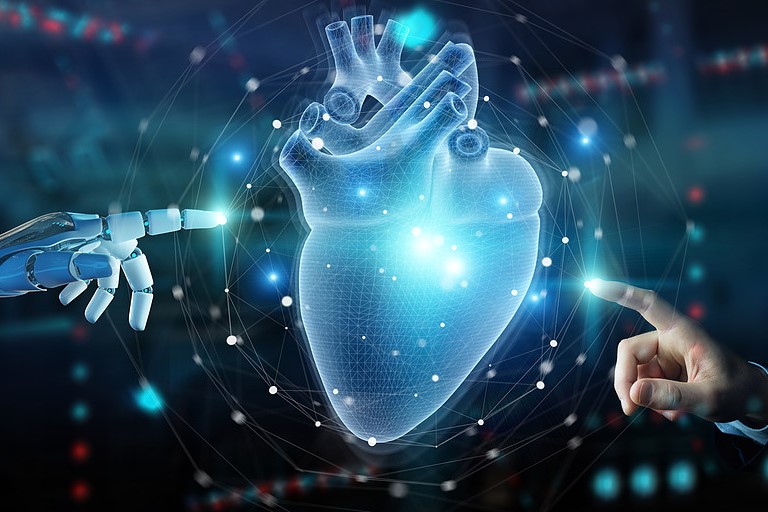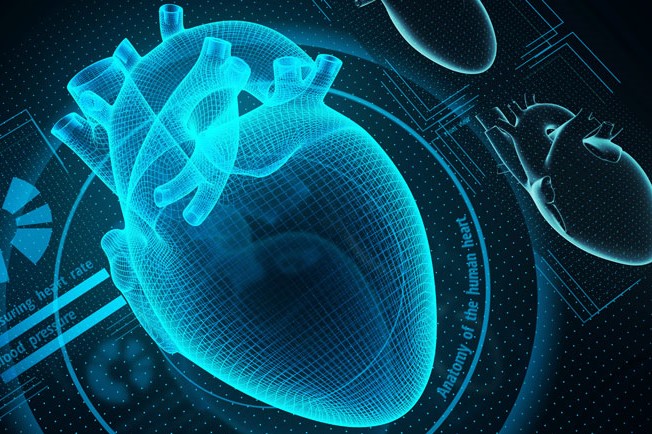
Heart-Saving AI: an artificial intelligence system shows promise in identifying signs of heart transplant rejection
Heart-Saving AI: heart transplantation can be lifesaving for patients with end-stage heart failure. However, many patients experience organ transplant rejection, in which the immune system attacks the transplanted organ
But detecting transplant rejection is challenging. In its early stages, patients may not experience symptoms, and experts do not always agree on the degree and severity of the rejection when they examine heart biopsies to diagnose the problem.
AI that helps in heart transplants: the CRANE system
To help address these challenges, Harvard Medical School investigators at Brigham and Women’s Hospital created an artificial intelligence system called cardiac rejection assessment neural estimator (CRANE) that can help detect rejection and estimate its severity.
In a pilot study, the team evaluated CRANE’s performance on heart-tissue samples provided by patients from three different countries, finding that it could help cardiac experts more accurately diagnose rejection and decrease the time needed for examination.
Results of the team’s work, published in Nature Medicine, demonstrate the feasibility and promise of using this approach in larger clinical trials.
“Our retrospective pilot study demonstrated that combining artificial intelligence and human intelligence can improve expert agreement and reduce the time needed to evaluate biopsies,” said the study’s senior author Faisal Mahmood, HMS assistant professor of pathology at Brigham and Women’s.
“Our results set the stage for large-scale clinical trials to establish the utility of AI models for improving heart transplant outcomes.”
Mahmood also leads the Mahmood Lab in the Department of Pathology at Brigham and Women’s.
Heart biopsies are commonly used to identify and grade the severity of organ rejection in patients after heart transplantation.
However, several studies have shown that experts often disagree on whether the patient is rejecting the heart or the degree of severity of the rejection.
The variability in diagnosis has direct clinical consequences and can cause critical delays in treatment, unnecessary follow-up biopsies, anxiety, inadequate medication dosing, and, ultimately, worse outcomes.
ECG EQUIPMENT? VISIT THE ZOLL BOOTH AT EMERGENCY EXPO
CRANE, when AI assesses the heart in tandem with professionals
CRANE is designed to be used in tandem with human expert assessment to establish an accurate diagnosis faster, and it can also be used in settings where there may be few pathology experts available.
The team trained CRANE for detection, subtyping, and grading of transplant rejection using thousands of pathology images from over 1,300 heart biopsies from Brigham and Women’s.
The researchers then validated the model, using test biopsies from the Brigham and Women’s and independent, external test sets received from hospitals in Switzerland and Turkey.
The external validation datasets were constructed to demonstrate a large degree of variability as a way to stress-test the AI model and ensure that it can perform accurately even when it encounters a lot of confusing signals.
CRANE performed well in detecting and assessing rejection, with results comparable to those from conventional assessments.
When experts used the tool, disagreement between experts was reduced and assessment time decreased.
The authors note that the tool’s use in clinical practice remains to be determined, and they plan to make further improvements to the system, but the results illustrate the potential of integrating AI into diagnostics.
“Throughout the history of medicine, diagnostic assessments have been largely subjective,” said Mahmood.
“But because of the power and assistance of computational tools, that’s beginning to change.
The time is right to make a shift by bringing together people with clinical expertise and those with expertise in computational science to develop assistive diagnostic tools.”
Heart disease: who supported AI CRANE
This work was supported in part by the BWH President’s Fund, National Institute of General Medical Sciences (R35GM138216), a Google Cloud Research Grant, Nvidia GPU Grant Program, internal funds from Brigham and Women’s and Massachusetts General Hospital Pathology, the National Institutes of Health, the National Library of Medicine Biomedical Informatics and Data Science Research Training Program (T15LM007092), the National Human Genome Research Institute Ruth L. Kirschstein National Research Service Award Bioinformatics Training Grant (T32HG002295), the National Cancer Institute Ruth L. Kirschstein National Service Award (T32CA251062), and the National Science Foundation Graduate Fellowship.
Read Also:
Emergency Live Even More…Live: Download The New Free App Of Your Newspaper For IOS And Android
Heart Failure: Symptoms And Possible Treatments
What Is Heart Failure And How Can It Be Recognised?
Heart: What Is A Heart Attack And How Do We Intervene?
Do You Have Heart Palpitations? Here Is What They Are And What They Indicate
Heart Attack Symptoms: What To Do In An Emergency, The Role Of CPR



